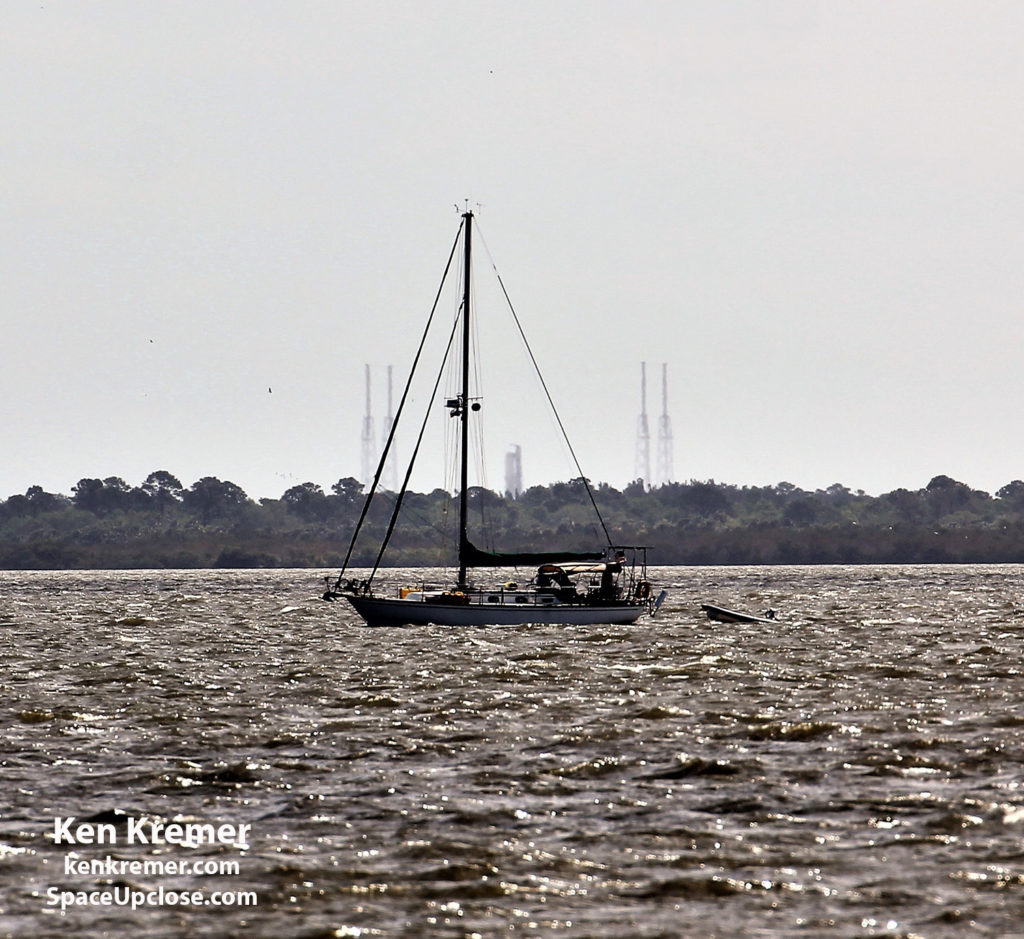Ken Kremer — Space UpClose
— 30 March 2018
SPACE CENTER, FL – The weather outlook
is rather promising for the Easter Monday launch of the SpaceX’s 14th
resupply mission loaded with over 2.5 tons of science and supplies to the International
Space Station on April 2.
for both the Falcon 9 first stage and Dragon cargo ship on the same mission for
only the second time.
cargo freighter is now slated for 4:30 p.m. EDT Monday, April 2 from Space Launch Complex 40 at Cape
Canaveral Air Force Station in Florida.
Air Force meteorologists with the 45th Space Wing Weather Squadron at Patrick Air Force Base Air Force are projecting very good weather
with an 80 percent chance of acceptable conditions at launch time. The primary
concerns are for flight through precipitation and the cumulous cloud rule.
delay for any reason technical or weather, the weather forecast remains at 80 percent
favorable for the 24 hour scrub turnaround day on Tuesday, April 3.
will delight the hordes of tourists gathered from across the globe to watch the
launch over the spring break and coincidental religious holidays this weekend.
The path to launch was cleared following the
successful hold down static fire test of the first stage at pad 40 on
Wednesday, March 28.
complete—targeting April 2 launch from Pad 40 in Florida for Dragon’s
fourteenth mission to the @Space_Station,” SpaceX tweeted following the March
test.
 |
|
SpaceX Falcon 9 first stage stands erect at pad 40 during
static test fire campaign ahead of launch, in this view from Titusville. Credit: Ken Kremer/kenkremer.com/spaceupclose.com |
engines were ignited for several seconds.
fire test, the rocket’s first and second stages are fueled with liquid oxygen
and RP-1 propellants like an actual launch, and a simulated countdown is
carried out to the point of a brief engine ignition.
down engine test with the erected Falcon 9 rocket involved the ignition of all
nine Merlin 1D first stage engines generating some 1.7 million pounds of thrust
at pad 40 while the two stage rocket was restrained on the pad – minus the Dragon
payload.
last for perhaps seven seconds or more compared to a prior runs of about three
seconds.
by significant upgrades to the pad as part of the pad 40 rebuilding process, as
previously explained by Muratore, Director of Space Launch Complex 40, during a media
briefing.
SpaceX engineers to confirm the rockets readiness to launch.
40 hanger to attach the Dragon spacecraft.
only the second time in the history of SpaceX’s commercial resupply services
(CRS) contract for NASA, both the Falcon 9 rocket and Dragon resupply ship are
reused vehicles that previously flew on missions to space and were recovered
and recycled.
the Falcon 9 first stage was recycled from the CRS-12 mission and touched down softly and safely at LZ-1 at the Cape.
the CRS-14 mission counts as the first of several planned for 2018.
after launch, Dragon will reach its preliminary orbit, at which point it will
deploys its solar arrays and begins a carefully choreographed series of
thruster firings to reach the International
Space Station.
20-foot high, 12-foot-diameter Dragon CRS-14 vessel will carry about 5,800
pounds of science experiments, research gear, crew supplies and hardware to the orbiting outpost and stay about 4
weeks.
April 4. Expedition 55 Flight Engineers Norishege Kanai of the Japan Aerospace
Exploration Agency, backed up by NASA astronaut Scott Tingle,
will supervise the operation of the Canadarm2 robotic arm for Dragon’s capture.
After Dragon capture, ground commands will be sent from mission control in
Houston for the station’s arm to rotate and install it on the bottom of the
station’s Harmony module.
CRS-14, ULA, Boeing, Lockheed Martin, Orbital ATK and more space and mission
reports direct from the Kennedy Space Center and Cape Canaveral Air Force
Station, Florida.
Earth and Planetary science and human spaceflight news: www.kenkremer.com –www.spaceupclose.com –
twitter @ken_kremer – ken
at kenkremer.com


